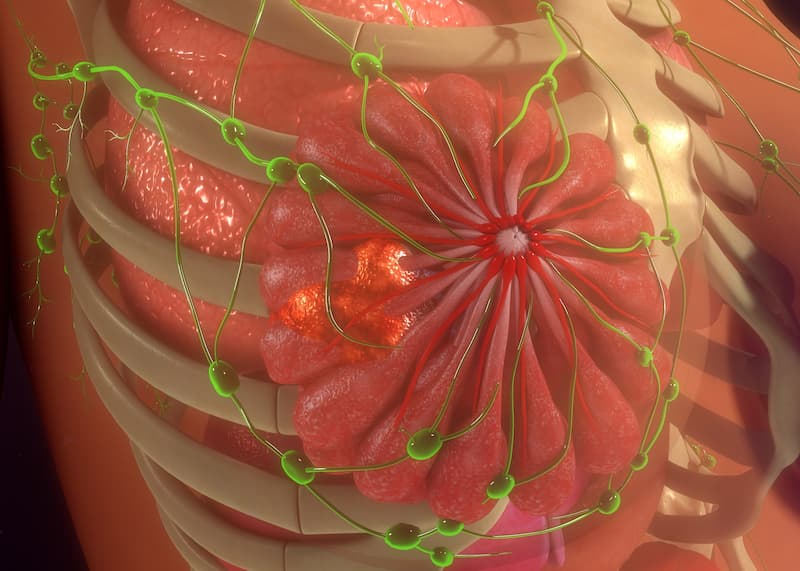Despite Lack of Efficacy, Alisertib Shows ‘Meaningful’ Activity in Breast Cancer
Adding fulvestrant to alisertib does not appear to improve objective in patients with endocrine-resistant metastatic breast cancer in the phase 2 TBCRC041 trial.
The addition of fulvestrant (Faslodex) to alisertib did not improve outcomes for patients with endocrine-resistant metastatic breast cancer, although single-agent alisertib yielded some clinical activity, according to findings from the phase 2 TBCRC041 trial (NCT02860000) published in JAMA Oncology.
Common adverse effects with alisertib monotherapy in the phase 2TBCRC041 study included neutropenia, leukopenia, and anemia.

Patients receiving alisertib monotherapy in arm 1 had an objective response rate (ORR) of 19.6% (90% CI, 10.6%-31.7%), with a median duration of response (DOR) of 15.1 months and a 24-week clinical benefit rate (CBR) of 41.3% (90% CI, 29.0%-54.5%). Additionally, the estimated median progression-free survival (PFS) in this arm was 5.6 months (95% CI, 3.9-10.0). The 1-year overall survival (OS) rate was 75.1% (95% CI, 63.4%-89.0%), and the estimated median OS was 22.7 months (95% CI, 18.4-not estimable [NE]).
For patients receiving alisertib plus fulvestrant in arm 2, the ORR was 20.0% (95% CI, 10.9%-32.3%), the median DOR was 8.5 months, and the 24-week CBR was 28.9% (90% CI, 18.0%-42.0%). The estimated median PFS was 5.4 months (95% CI, 3.9-7.8). Additionally, the 1-year OS rate was 62.7% (95% CI, 49.7%-79.0%), and the estimated median OS was 19.8 months (95% CI, 11.5-NE).
Investigators of this randomized phase 2 trial assessed the impact of adding fulvestrant to alisertib as treatment for endocrine-resistant metastatic breast cancer. Patients were randomly assigned 1:1 to receive alisertib monotherapy in arm 1 or fulvestrant plus alisertib in arm 2. Patients received 50 mg of alisertib orally twice daily on days 1 to 3, 8 to 10, and 15 to 17 in a 28-day cycle with or without 500 mg of fulvestrant intramuscularly on days 1 and 15 of cycle 1 and then on day 1 of all subsequent cycles.
The primary end point was whether the ORR of fulvestrant plus alisertib was greater than alisertib monotherapy by at least 20%—assuming the ORR for the latter was 20%. Secondary end points included 24-week CBR rate, DOR, PFS, and OS.
AURKA expression and estrogen receptor α (ERα) expression based on metastatic tumor biopsy specimens represented a correlative end point.
Postmenopausal patients with ER-positive, HER2-negative metastatic breast cancer or ER-negative, HER2-negative breast cancer with a history of primary ER-positive, HER2-negative disease were eligible for inclusion in the study. Additional inclusion criteria included receiving 2 or fewer lines of chemotherapy for metastatic breast cancer, prior treatment with fulvestrant, measurable disease per RECIST criteria, and no visceral crisis.
Among 91 evaluable patients, 46 received alisertib monotherapy and 45 received alisertib plus fulvestrant. Of note, all patients (100%) received prior treatment with a CDK4/6 inhibitor, 58.2% received prior chemotherapy, and all patients with ER-positive metastatic breast cancer received prior therapy with fulvestrant.
The median number of treatment cycles completed in arm 1 was 6 (range, 1-34). Additionally, 82.6% of patients discontinued treatment due to progressive disease, 4.3% discontinued due to intolerability, 4.3% discontinued due to death, and 2.2% discontinued due to physician decision.
The median number of treatment cycles in arm 2 was 4 (range, 1-44). Treatment discontinuation occurred among 68.9% due to progressive disease, 13.3% due to intolerability, 8.9% due to refusal, 2.2% due to second primary cancer, and 2.2% due to death.
Overall, 45.9% of patients who had disease progression following alisertib monotherapy crossed over to arm 2. Investigators observed 1 partial response and a median PFS of 3.7 months after crossover.
In arm 1, there was insufficient evidence to suggest that ERα impacted PFS (hazard ratio [HR], 1.79; 95% CI, 0.77-4.19). However, investigators noted that PFS increased for those with AURKA-negative tumors compared with those who had AURKA-positive tumors (HR, 0.25; 95% CI, 0.10-0.62). In arm 2, there was not enough evidence to suggest that PFS differed based on ERα expression (HR, 2.27; 95% CI, 0.84-6.14) or AURKA expression (HR, 0.48; 95% CI, 0.21-1.10).
In arm 1, the most common grade 3 or higher adverse effects (AEs) included neutropenia (43.4%), leukopenia (17.4%), and anemia (19.6%). Grade 3 or higher AEs in arm 2 included neutropenia (42.2%), leukopenia (31.1%), lymphopenia (15.6%), fatigue (11.1%), and anemia (8.9%).
Reference
Haddad TC, Suman VJ, D’Assoro AB, et al. Evaluation of alisertib alone or combined with fulvestrant in patients with endocrine-resistant advanced breast cancer: the phase 2 TBCRC041 randomized clinical trial. JAMA Oncol. Published online March 09, 2023. doi:10.1001/jamaoncol.2022.7949
Gedatolisib Combo With/Without Palbociclib May Be New SOC in PIK3CA Wild-Type Breast Cancer
December 21st 2025“VIKTORIA-1 is the first study to demonstrate a statistically significant and clinically meaningful improvement in PFS with PAM inhibition in patients with PIK3CA wild-type disease, all of whom received prior CDK4/6 inhibition,” said Barbara Pistilli, MD.